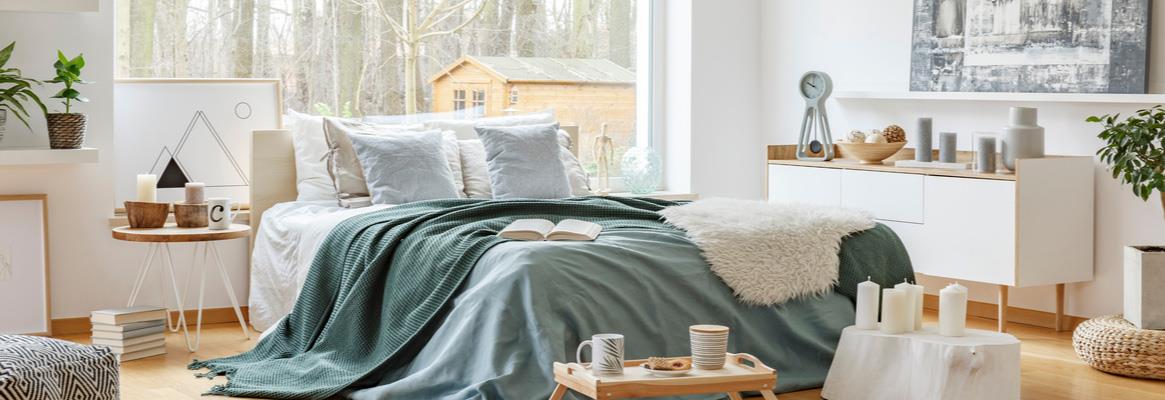When you've already done your research and picked the best memory foam mattress, how can you further upgrade your sleep? Try taking a look at your bed sheets. There are all sorts of bed sheets available, and each one has its own unique perks. Finding the ideal one for your sleeping space will help you get a deep, restful night of sleep. There are all sorts of factors that go into the best bed sheets.
Thread Count
Of course one of the key sheet types that gets brought up is high thread count sheets. Just about everyone knows that a higher thread count is better. What does this mean? Thread count essentially just refers to the number of threads in an inch. More threads mean a smoother, denser sheet. High thread counts also allow a sheet to be more durable. Typically, a thread count of at least 250 is fine. At higher levels, you cannot tell much of a difference, and there are so many other things that affect a sheet's quality.
Fibre Type
The material used for a sheet has a huge impact on its overall performance. The majority of sheets are made out of cotton. Cotton is popular because it is durable, lightweight, breathable, and washable. Almost all sheets are made from cotton, but there are some other potential choices. Silk is known for its luxurious texture and cooling feel. Those who want an eco-friendly fibre may choose Tencel, a material made from wood pulp, or a rayon material made from bamboo. Polyester is an affordable alternative to cotton. This synthetic material is not quite as breathable, but it is very sturdy.
Staple Length
Staple length is mostly just used when discussing cotton sheets, but since cotton is the most common sheet material, it's worthwhile to learn a bit about staple. The staple length of a sheet is the type of fibre used to make the cotton. A longer staple is usually better, because it leads to less microscopic strands sticking out to poke you. Common long staple types of cotton include Egyptian cotton, Supima cotton, Pima cotton, and MicroCotton.
Fabric Weave
The way the threads are woven together greatly affects a sheet's eventual texture and structure. Plain weaves like a percale weave result in a smooth, soft, lightweight sheet. If you want something with a little silkiness, consider a sateen weave. These sheets are a little denser, warmer, and slipperier. For the ultimate warmth, consider a flannel sheet. This weave method creates a fuzzy feeling sheet that traps body warmth. A final option is jersey, which is technically a knit instead of a weave. Jersey creates a stretchy material that conforms easily to the body's curves.
Thread Ply
Thread ply refers to the number of strands that are twisted into each individual thread before it's woven to make a sheet. Sheets come in single and double ply, with single typically being the preferred option. Two ply sheets have a looser weave and a rougher feel. Often, a single ply sheet with a low thread count will still feel softer than a double ply sheet with a higher thread count. However, two ply sheets are more breathable, which can be good if you're a hot sleeper.
Size
Sheets usually come in standard mattress sizes like twin, queen, or king. However, keep in mind that these standard sizes only refer to the width and length of a bed. When shopping for fitted sheets that go over a mattress, you also need to consider the width of the mattress. When your mattress is under 14 inches thick, a standard sheet will usually technically work. Most people find that a deep sheet size is preferable for mattresses that are any more than 11 feet deep though. For those with super thick mattresses of over 15 inches, an extra deep sheet size is best.



20240504122856.png)






Comments